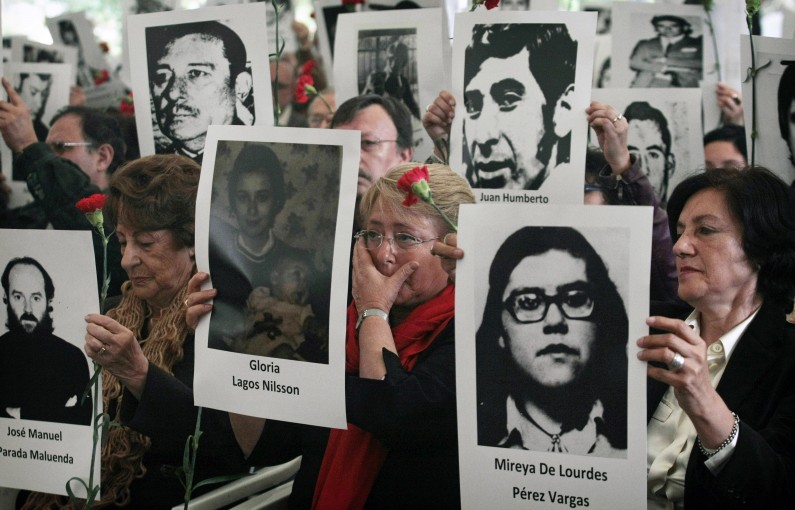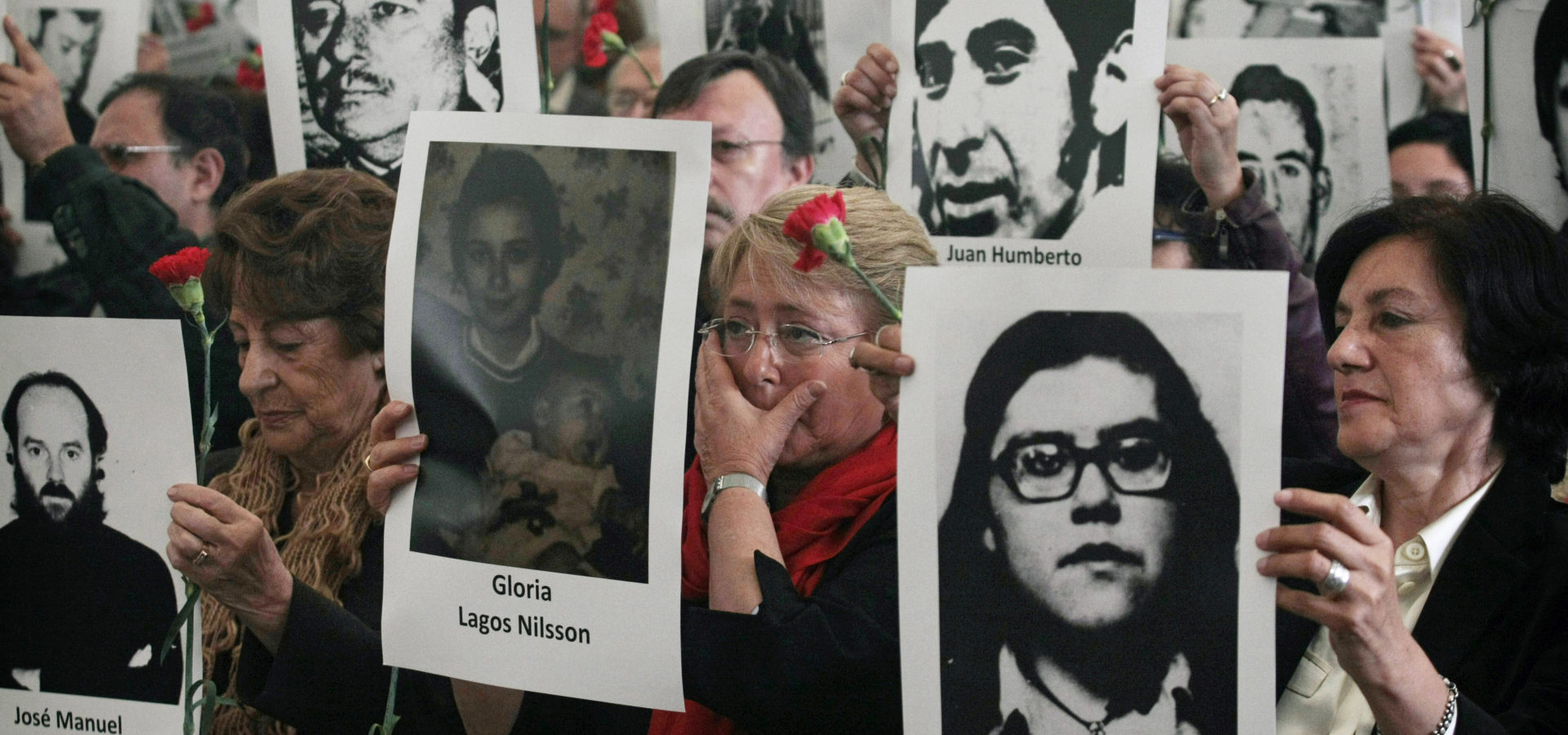
Chile’s struggle for memory against a dictatorship-imposed oblivion has braced itself for another sliver of discovery. On July 28, water works-related excavations in Las Brisas led to the discovery of human bone fragments. Buried just 10 kilometers south of the town of Santo Domingo, the location corresponds to the vicinities of the first dictatorship era torture and extermination center known as Tejas Verdes.
The discovered remains pertain to Chile’s “detenidos desaparecidos” — the disappeared victims of Augusto Pinochet’s military dictatorship. From 1973 to 1990, it is estimated that around 3,200 Chileans were murdered at the hands of repressive state bodies, namely the National Intelligence Directorate (DINA) and, in the years following the dissolution of DINA, the National Information Center (CNI).
Upon notification of the discovery, Marianela Cifuentes Alarcón, a visiting minister investigating human rights cases, issued an order to the San Miguel Court of Appeals in Santo Domingo for further investigation into the discovery of human remains, with the aim of obtaining further evidence. Patricio Bustos, director of Chile’s Forensic Medical Service (SML), exhibited caution in confirming the remains as pertaining to Pinochet’s murdered opponents.
Both the SML and the Investigations Police of Chile (PDI) quickly confirmed the initial suspicions, stating that the remains indicate the presence of several dictatorship era victims. The area is now heavily guarded to ensure that exhumations can continue unhindered, and the Forensic Medical Service will commence the laborious task of identifying victims.
Understating Tejas Verdes
The recent discovery has been hailed as a “positive surprise” by Chilean researcher and author Javier Rebolledo, who specializes in uncovering crimes pertaining to the dictatorship era. Speaking to Cambio 21, Rebolledo stated that “it is a positive surprise to have discovered new remains; however, it is a surprise that coincides with historical narratives indicating the people who were executed there.”
Rebolledo added, “Tejas Verdes was the place where DINA was born — people were transferred from Londres 38 to San Antonio, to the Tejas Verdes prison camp which was the main detention and torture center … The place symbolizes all repression that was applied to the entire country.”
Under the supervision of former DINA chief Manuel Contreras, Tejas Verdes operated as the first of more than 1,200 torture centers in Chile. The brutal military coup on Sept. 11, 1973 was only the initiation of a macabre aftermath, in which opposition to Pinochet was rooted out, thus destroying the socialist process embarked upon by ousted President Salvador Allende.
Upon the pretext that the Cuban Revolution could potentially spread across South America, widespread oppression against Pinochet’s opponents was carried out, targeting, in particular, militants of the Chilean Communist Party and the Revolutionary Left Movement (MIR).
Until recently, Tejas Verdes’ notoriety was relatively understated, with research focusing on other infamous torture centers such as Villa Grimaldi,Londres 38 and, in recent years, the horrors divulged with regard to Simon Bolivar Barracks — an extermination center where MIR and Communist Party leaders were taken.
However, Tejas Verdes has been identified as the prelude to all the horrific torture rituals and disappearances practiced by the dictatorship. Prior to the formation of DINA and other related torture brigades, after all, Tejas Verdes had already been functioning as a torture and extermination center.
Hernán Valdés, a Tejas Verdes survivor and author of the book “Tejas Verdes – Diary of a Concentration Camp in Chile” (1974) had stated, “All I knew about evil until then was only caricature, only literature. Now evil has lost all moral reference.”
In “El Despertar de los Cuervos: Tejas Verdes, el origen del exterminio en Chile,” or “The Awakening of the Crows: Tejas Verdes, the Origin of Mass Extermination in Chile,” (2013), Rebolledo provides an intricately detailed insight into the atrocities committed at Tejas Verdes. Drawing upon testimony from torture survivors and information gleaned from available official investigation documents, Rebolledo provides complex commentary and expounds upon a network of torturers who later operated under various brigades, initiating what was to become the systematic torture and extermination of Pinochet’s opponents.
Several later DINA agents, such as Miguel Krassnoff Martchenko, Cristian Labbé, Marcelo Moren Brito, Pedro Espinoza Bravo, Ingrid Olderock and Vittorio Orvieto Tiplizky, were among those who brought their torture expertise to various centers in Chile. Krassnoff, for example, was a close collaborator with Juan Morales Salgado, who, together with Manuel Contreras, operated Simon Bolivar Barracks.
Labbe — a personal friend of Krassnoff’s who organized several functions hailing the imprisoned former torturer as an exemplary citizen unjustly imprisoned — occupied the role of torturer and torture instructor at Tejas Verdes, while Brito — who would later head the Brigada Caupolicán — participated in the detention and murder of former MIR militants, including MIR General Secretary Miguel Enriquez.
Extreme torture methods — for example, experimentation upon detainees, amputations, sexual violence including the use of dogs in sexual torture, electric shock, forced ingestion of urine and feces, mock executions, and genital mutilation — garnered from testimonies that Rebolledo mentions in his book.
“You will forget and I will forget”
It is hoped that the discovery of the human bone fragments will serve to shed light upon Chile’s macabre and mostly undisclosed history. Of particular note is the discrepancy between collective memory and officially disclosed sources. To date, there is no precise statistical information related to the deaths and disappearances at Tejas Verdes.
While testimony against former DINA agent Manuel Contreras and other torturers has been instrumental in assembling a full picture of the dictatorship’s widespread atrocities, Chilean collective memory remains incarcerated within several forces stemming from Pinochet’s advocacy in favor of oblivion, as endorsed by the country’s right wing.
Oblivion, openly encouraged by Pinochet during a 1995 television interview, has enabled the majority of torturers, collaborators and agents working within the dictatorship to benefit from impunity. As quoted in Steve J. Stern’s trilogy about the dictatorship and Chilean memory, Pinochet had stated, “The only way to solve problems is olvido (oblivion). If day after day we are always returning to the same point, we will continue fighting. Forget it, do not talk more about the issue, then you will forget and I will forget.”
Chileans who suffered under Pinochet have strongly opposed oblivion and mobilized to reclaim memory. However, Chile remains incarcerated by the constitution, institutions, legal framework and influential individuals with strong ties to the dictatorship. Following the plebiscite which marked the initiation of the subsequent transition to democracy, successive governments were unable, or unwilling, to challenge the dictatorial framework that continues to exist today. Michelle Bachelet’s center-left government, for example, is notoriously known for its application of Pinochet’s anti-terror legislation against the Mapuche, indigenous people of Chile. Bachelet also recently appointed a former CNI agent, James Sinclair, as Chile’s ambassador to Australia — an appointment that was cancelled following outcry and protests among the Chilean community.
Predictably, the army has refused to collaborate with SML in order to shed light upon crimes perpetrated by the dictatorship. Speaking to Cooperativa.cl, Bustos, the director of SML, denounced the recurring oblivion practice, stating, “We have an action of concealment by perpetrators of that era.”
The discovery of human remains at Tejas Verdes will hopefully provide an additional means of challenging the state, as human rights organizations in Chile, as well as those who suffered under the dictatorship, continue to insist upon the dissemination of information related to the murders and disappearances of Chileans, which, so far, has been withheld in order to uphold Pinochet’s plea of oblivion.


